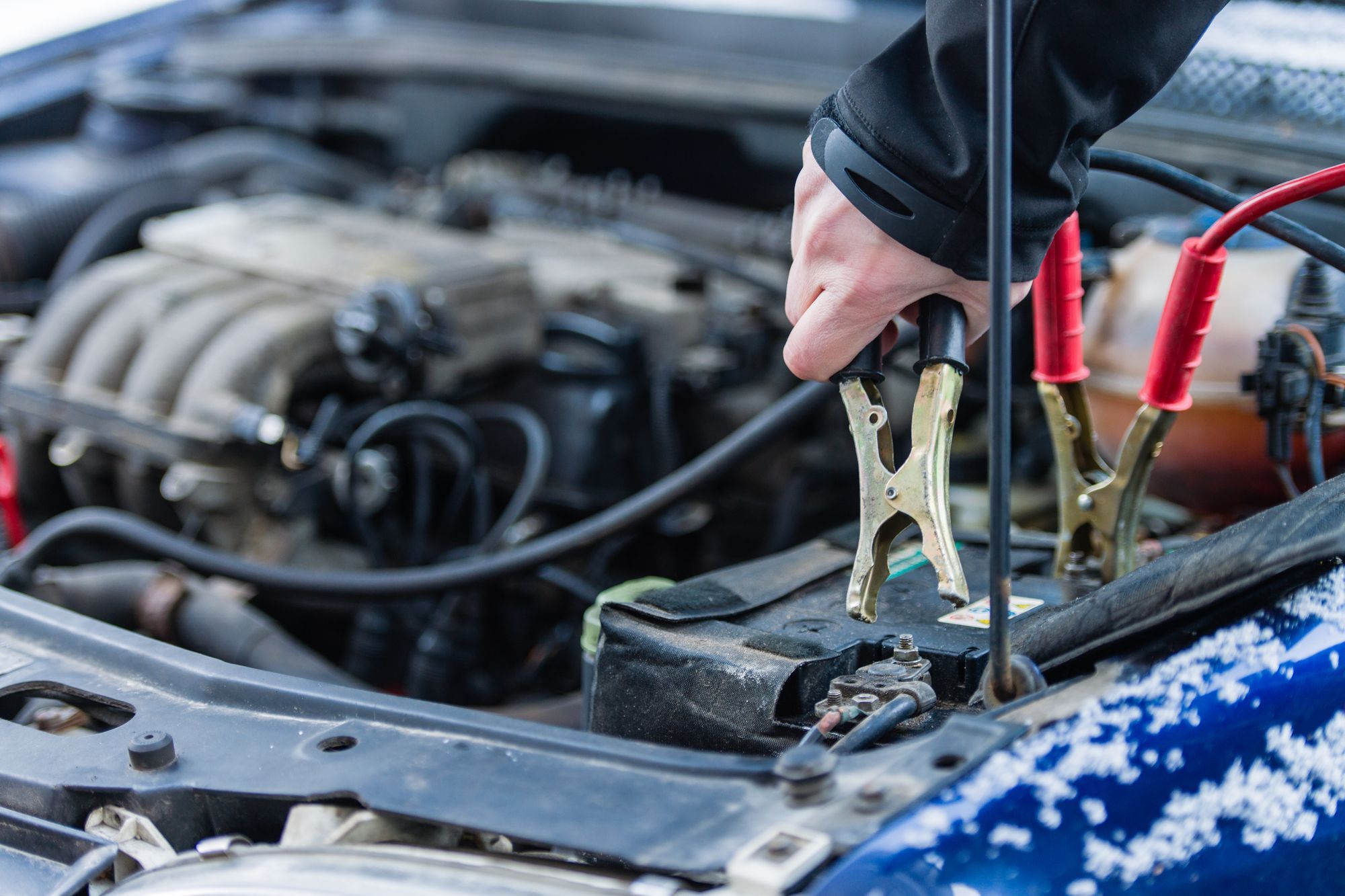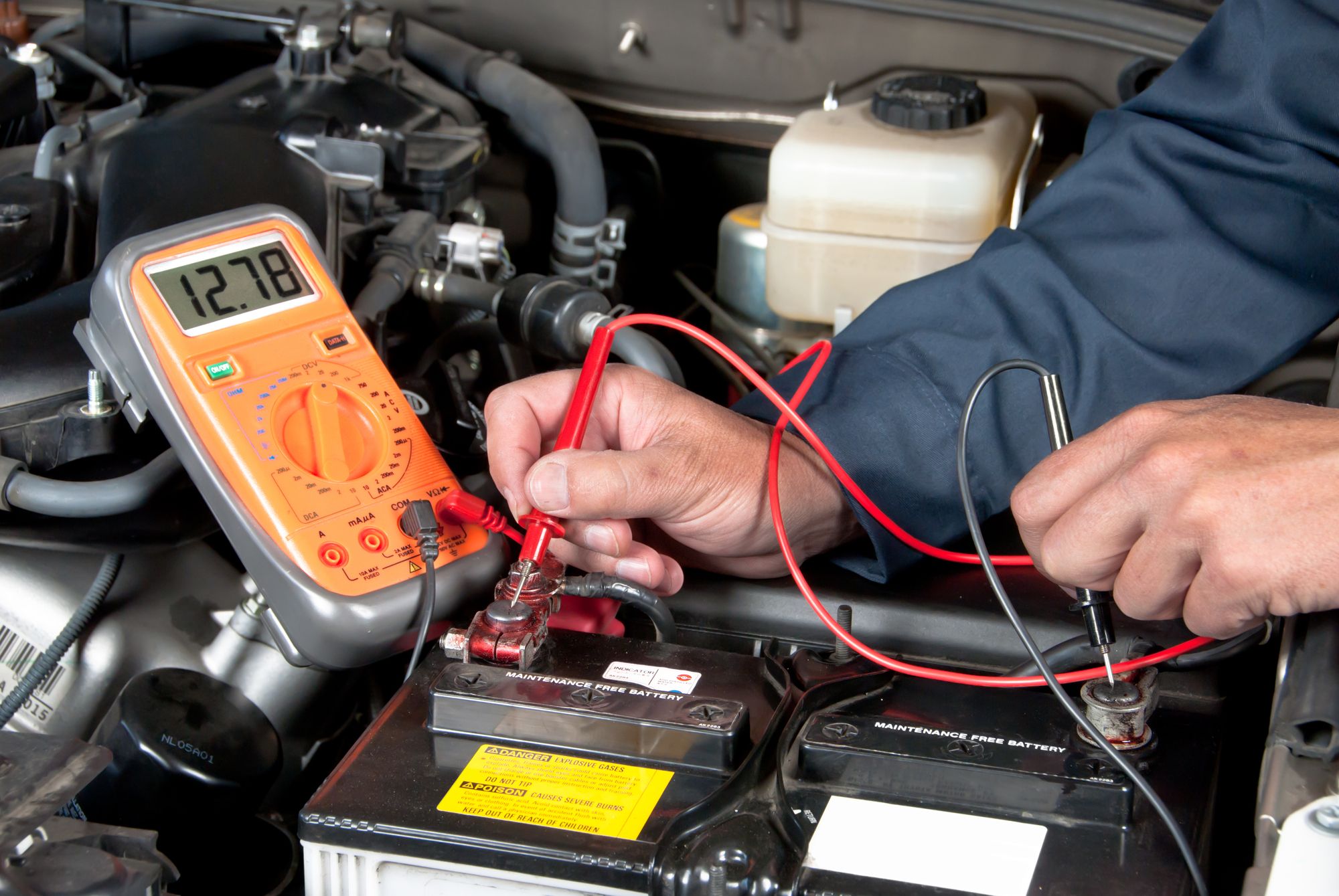Imagine this: you’re ready to head out for work, a meeting, or just a casual drive. You slide into your car, insert the key, turn it, and… nothing happens. Your car refuses to start. Most likely, your battery is dead. It’s a frustrating scenario for any driver, especially when you need your vehicle the most. But don’t panic; understanding what happens when your car’s battery is dead and knowing what steps to take can save you time, money, and stress.
In this article, we’ll explore everything you need to know when your car battery dies, from identifying the symptoms and reasons for a dead battery to practical steps you can take to get your car back on the road.
Symptoms of a dead car battery 🪫
Before we dive into the solutions, it’s essential to recognise the signs that indicate your car’s battery might be dead. Here are the most common symptoms:
- The engine won’t start: The most obvious sign of a dead battery is when the engine simply doesn’t turn over, and all you hear is a clicking noise. If the lights on your dashboard don’t come on or are very dim, it’s another telltale sign.
- Flickering or dim headlights: If your car’s headlights are flickering or seem dimmer than usual, it could indicate a weak or dying battery.
- Electrical components not working: Modern cars rely heavily on electronics. If your radio, electric windows, or other electrical components aren’t functioning, the battery might be the issue.
- A slow crank: Sometimes, the car might crank but very slowly. This indicates that the battery is struggling to provide enough power to start the engine.
- Battery warning light: Many cars will display a battery warning light on the dashboard when there’s a problem with the battery or charging system.

Common reasons for a dead battery ⚡
Understanding the causes of a dead battery can help you prevent it in the future. Here are some common reasons:
- Leaving lights on: One of the most common reasons for a dead battery is accidentally leaving your headlights or interior lights on. Even something as simple as leaving a door slightly open can drain the battery overnight.
- Parasitic drain: Even when your car is off, certain components like the clock or alarm system continue to use power. However, if there’s a faulty electrical component, it might drain more power than usual, leading to a dead battery.
- Extreme temperatures: South Africa’s weather can be unpredictable, and both extreme heat and cold can take a toll on your battery. High temperatures can cause the battery fluid to evaporate, while cold weather can slow down the chemical reactions inside the battery, reducing its ability to start the car.
- Short trips: Frequently taking short trips can prevent your battery from fully recharging, especially if you’re driving in heavy traffic with frequent stops and starts.
- Old age: Car batteries don’t last forever. The average lifespan is about 3 to 5 years. As they age, their ability to hold a charge diminishes, making them more susceptible to dying.
- Faulty charging system: If your car’s alternator isn’t working correctly, it won’t charge the battery properly while the engine is running. This can lead to a dead battery, even if you haven’t done anything wrong.
What to do when your battery dies 🤔
Now that you know the symptoms and causes, let’s explore the steps you should take when your battery dies.
Step #1: Stay calm and assess the situation
The first thing to do when your car doesn’t start is to remain calm. Panic won’t help you solve the problem. Assess the situation:
- Are you in a safe location?
- Do you have a way to call for help if needed?
- Are you familiar with jump-starting a car, or do you need assistance?
Step #2: Check for obvious issues
Before assuming the battery is dead, check for any obvious issues that might be preventing the car from starting:
- Ensure the gear selector is in “Park” or “Neutral.”
- Check if the steering wheel is locked, which can sometimes prevent the car from starting.
- Ensure that all doors, the bonnet, and the boot are securely closed.
Step #3: Try a jump-start
If you’re sure the battery is the problem, the most common and quickest solution is to jump-start your car. Here’s how you can do it:
- Get the right equipment: You’ll need a set of jumper cables and another vehicle with a fully charged battery. Alternatively, a portable jump starter can also do the trick.
- Position the vehicles: Park the working vehicle close to your car, ensuring they don’t touch. Turn off both engines and open the bonnets.
- Connect the cables:
– Attach one end of the red (positive) cable to the positive terminal of the dead battery.
– Attach the other end of the red cable to the positive terminal of the working battery.
– Connect one end of the black (negative) cable to the negative terminal of the working battery.
– Attach the other end of the black cable to an unpainted metal surface on your car’s engine block (not the battery itself) to prevent sparking. - Start the working vehicle: Let it run for a few minutes to charge the dead battery.
- Start your car: After a few minutes, try starting your car. If it starts, let it run for at least 15-20 minutes to allow the alternator to recharge the battery.
- Disconnect the cables: Once your car is running, carefully disconnect the cables in reverse order.
If your car doesn’t start after a jump-start, the battery might be too far gone, or there could be another issue, such as a faulty alternator.
Step #4: Seek professional help if necessary
If jump-starting doesn’t work or you’re uncomfortable doing it yourself, it’s time to call for professional help. You can contact roadside assistance, a tow truck, or a mobile mechanic. Many South African insurance companies offer roadside assistance as part of their policies, so check if you’re covered.
Step #5: Replace the battery if needed
If your battery is old or has failed completely, you must replace it. Here’s how to go about it:
- Buy the right battery: Ensure you purchase a battery that’s compatible with your car’s make and model. It’s essential to match the battery’s size, voltage, and capacity to your vehicle’s requirements. Many auto parts stores in South Africa can help you find the right one.
- Install the battery: If you’re comfortable with basic car maintenance, you can replace the battery yourself. If not, a mechanic can do it for you in a matter of minutes.
- Recycle the old battery: Car batteries contain hazardous materials, so it’s crucial to recycle them properly. Most auto shops will accept your old battery for recycling.
Preventing future battery issues ✅
While a dead battery can be a hassle, there are steps you can take to prevent it from happening again:
- Regularly check your battery’s health: Many car parts shops and mechanics offer free battery testing. It’s a good idea to have your battery tested at least once a year, especially before winter or long road trips.
- Keep the battery clean: Corrosion on the battery terminals can prevent it from charging properly. Clean the terminals with a mixture of baking soda and water and a wire brush.
- Drive your car regularly: If you don’t drive your car often, the battery can lose its charge. Take your car for a spin at least once a week, especially during colder months, to keep the battery charged.
- Avoid short trips: Avoid making frequent short trips, especially in heavy traffic. If possible, combine errands to give your battery time to recharge during longer drives.
- Turn off electronics: Make sure to turn off all lights, radio, and other electronics before turning off your car. This will help preserve the battery’s charge.
What if you’re stranded? 😣
Sometimes, a dead battery happens at the worst possible time, like when you’re far from home or in an unfamiliar area. Here’s what you should do:
- Stay safe: If you’re stranded on the side of the road, stay inside your vehicle with the doors locked until help arrives. If you must exit your vehicle, ensure you are visible to other drivers by wearing a reflective vest or using warning triangles.
- Use your resources: Call for help using your mobile phone. If you’re in a remote area, your car insurance may offer roadside assistance. Alternatively, local towing services can be a lifeline.
- Be prepared: Always carry emergency supplies in your car, such as a spare battery, portable charger, jumper cables, a flashlight, and a first aid kit. This can make a huge difference in a difficult situation.
When to consider a battery replacement 🤗
Sometimes, a dead battery is a sign that it’s time to replace it rather than continue to revive it. Here are some factors to consider:
- Age: If your battery is more than three years old and has already been jump-started several times, it’s probably time to replace it.
- Frequent issues: If you find yourself jump-starting your car more than once a month, your battery is likely on its last legs.
- Visible damage: Check for signs of wear, such as cracks, bulges, or leaks. If you notice any of these, replace the battery immediately.
- Performance: If your car’s electrical systems are acting up or your battery isn’t holding a charge, it’s better to replace it.




Comments (2)